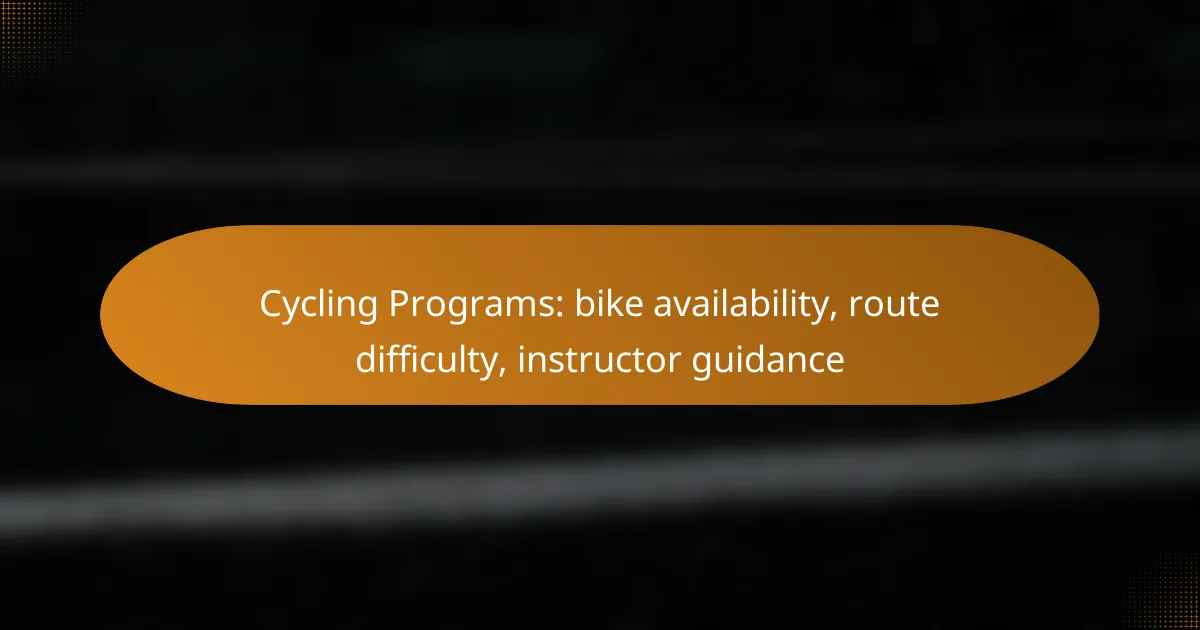High-Intensity Interval Training (HIIT) is a time-efficient workout method that alternates between intense bursts of exercise and recovery periods, catering to various fitness levels and goals. Whether you are a beginner or an experienced athlete, HIIT can enhance your fitness, burn calories, and improve performance in a fraction of the time compared to traditional workouts.

What are the benefits of High-Intensity Interval Training?
High-Intensity Interval Training (HIIT) offers numerous benefits, including improved fitness levels, efficient calorie burning, and enhanced athletic performance. This training method alternates short bursts of intense activity with periods of rest or lower-intensity exercise, making it effective for various fitness goals.
Improved cardiovascular health
HIIT significantly boosts cardiovascular health by increasing heart rate and improving circulation. Engaging in short, intense workouts can enhance the heart’s efficiency, leading to better oxygen delivery throughout the body.
Studies suggest that just a few sessions of HIIT per week can lower blood pressure and improve cholesterol levels, contributing to overall heart health. Incorporating exercises like sprinting or cycling into your routine can yield these benefits effectively.
Increased calorie burn
One of the standout advantages of HIIT is its ability to burn calories quickly. During intense intervals, the body expends energy at a higher rate, leading to significant calorie expenditure in a shorter time frame compared to traditional steady-state cardio.
For instance, a 20-minute HIIT session can burn as many calories as a longer, moderate-intensity workout. This makes HIIT an appealing option for those with limited time who still want to achieve weight loss or maintenance goals.
Enhanced metabolic rate
HIIT can elevate your metabolic rate for hours after the workout, a phenomenon known as excess post-exercise oxygen consumption (EPOC). This means that your body continues to burn calories even after you’ve finished exercising.
Incorporating HIIT into your weekly routine can lead to a more efficient metabolism, helping with weight management. A typical HIIT session can keep your metabolism elevated for up to 24 hours post-exercise.
Time efficiency
HIIT is particularly time-efficient, allowing individuals to achieve significant fitness gains in shorter workouts. Many HIIT sessions last between 15 to 30 minutes, making it easier to fit exercise into a busy schedule.
This efficiency does not compromise effectiveness; even brief sessions can lead to substantial improvements in fitness levels. For those juggling work or family commitments, HIIT offers a practical solution without sacrificing results.
Improved athletic performance
HIIT can enhance athletic performance by improving speed, strength, and endurance. The varied intensity levels mimic the demands of many sports, making it an excellent training method for athletes.
Incorporating HIIT into a training regimen can lead to better performance in sports that require bursts of speed or power. For example, sprinters and cyclists often use HIIT to improve their competitive edge.
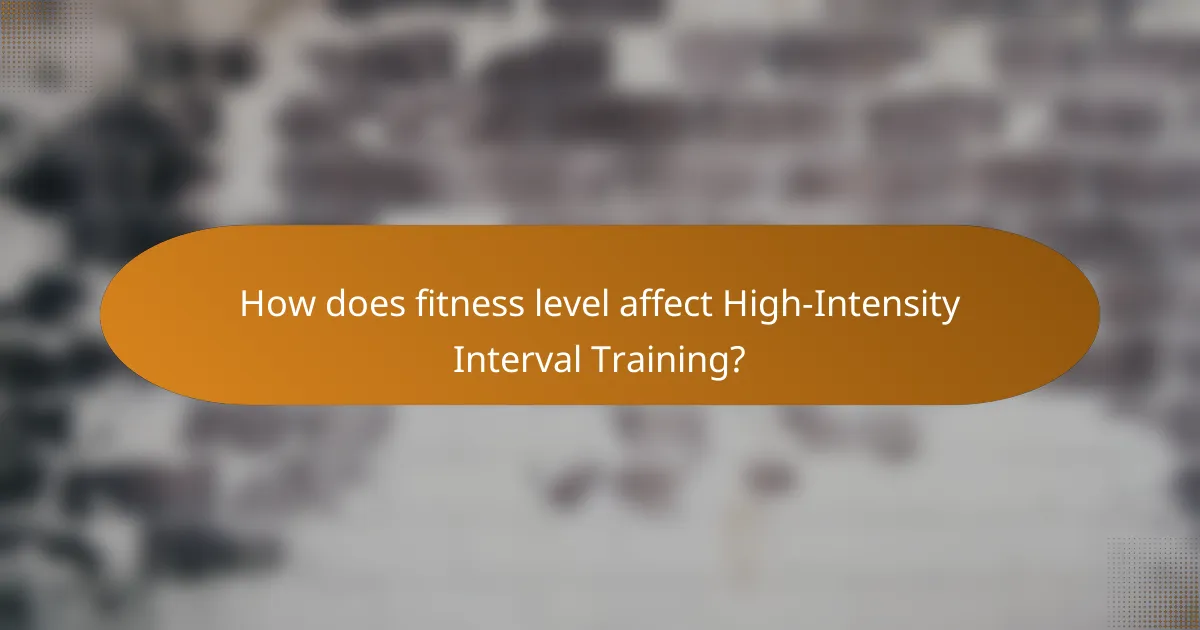
How does fitness level affect High-Intensity Interval Training?
Fitness level significantly influences how individuals approach High-Intensity Interval Training (HIIT). Beginners may need to focus on basic adaptations, while more experienced individuals can incorporate advanced techniques to maximize their workouts.
Beginner adaptations
Beginners should start with shorter intervals and longer rest periods to build endurance and confidence. A common approach is to perform 20 seconds of high-intensity exercise followed by 40 seconds of rest, gradually increasing intensity as fitness improves.
Examples of suitable exercises include bodyweight movements like squats, push-ups, or jumping jacks. It’s crucial for beginners to listen to their bodies and avoid pushing too hard to prevent injury.
Intermediate strategies
Intermediate participants can increase the intensity and complexity of their workouts by incorporating varied exercises and shorter rest intervals. For instance, a 30-second sprint followed by 15 seconds of rest can enhance cardiovascular fitness.
At this level, adding equipment such as kettlebells or resistance bands can diversify the workout. It’s beneficial to focus on form and technique to ensure safety while pushing limits.
Advanced techniques
Advanced HIIT practitioners can utilize complex movements and minimal rest to challenge their bodies further. Techniques like Tabata, which involves 20 seconds of all-out effort followed by 10 seconds of rest for eight rounds, can be highly effective.
Incorporating plyometrics, Olympic lifts, or circuit training can also elevate the intensity. Advanced users should regularly reassess their goals and adjust their routines to continue progressing and avoid plateaus.

What is the time commitment for High-Intensity Interval Training?
The time commitment for High-Intensity Interval Training (HIIT) can vary, but it typically requires less time than traditional workouts while still delivering effective results. Most HIIT sessions last between 15 to 30 minutes, making it a flexible option for those with busy schedules.
Typical session duration
HIIT sessions generally last from 15 to 30 minutes, depending on the intensity and structure of the workout. A common approach is to alternate between short bursts of high-intensity exercise, lasting 20 to 60 seconds, followed by brief recovery periods. This format allows for a highly effective workout in a short amount of time.
Weekly frequency recommendations
For optimal results, aim for 2 to 4 HIIT sessions per week. This frequency allows your body to recover while still providing enough stimulus for improvements in fitness levels. It’s important to listen to your body and adjust the frequency based on your recovery and overall fitness goals.
Time-efficient workout structures
HIIT can be structured in various time-efficient ways, such as the Tabata method, which consists of 20 seconds of intense work followed by 10 seconds of rest, repeated for 4 minutes. Another effective structure is the 30-30 format, where you perform 30 seconds of high-intensity exercise followed by 30 seconds of rest. These formats maximize effort in minimal time, making HIIT a practical choice for busy individuals.
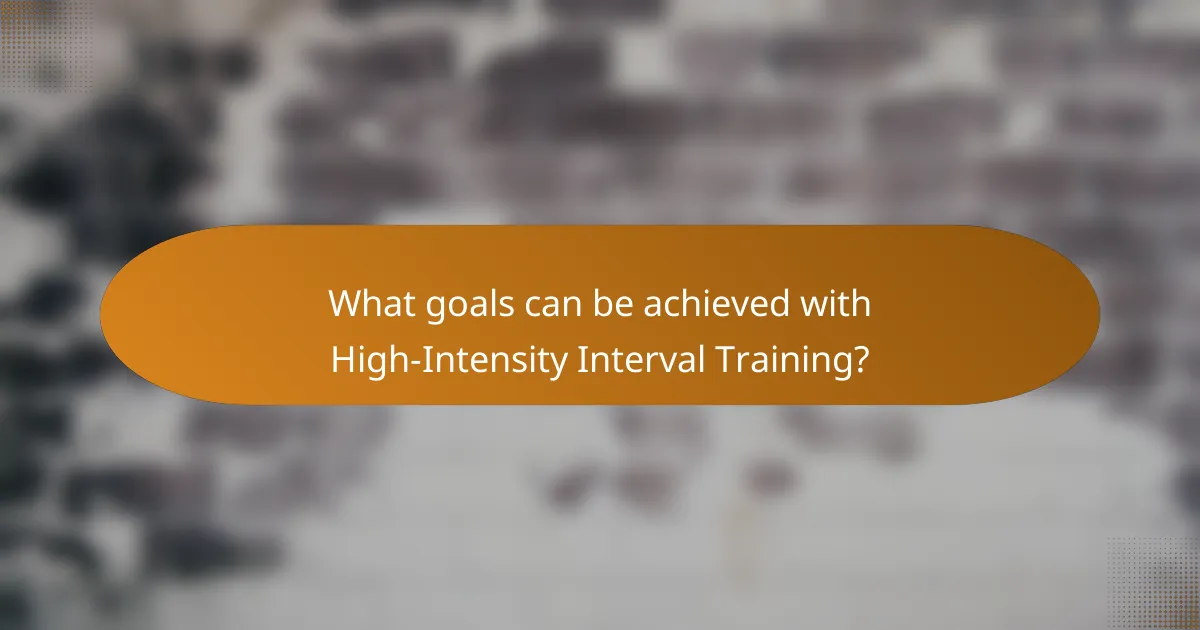
What goals can be achieved with High-Intensity Interval Training?
High-Intensity Interval Training (HIIT) can effectively help individuals achieve various fitness goals, including weight loss, muscle gain, and improved endurance. By alternating between short bursts of intense activity and rest or low-intensity periods, HIIT maximizes calorie burn and enhances overall physical performance.
Weight loss objectives
HIIT is particularly effective for weight loss due to its ability to burn a significant number of calories in a short time. Studies suggest that participants can burn more calories in 30 minutes of HIIT compared to steady-state cardio. Incorporating HIIT workouts 2-3 times a week can lead to noticeable fat loss, especially when combined with a balanced diet.
To maximize weight loss, focus on exercises that engage multiple muscle groups, such as burpees, squat jumps, and kettlebell swings. Monitor your heart rate to ensure you reach the desired intensity, typically around 80-90% of your maximum heart rate during the work intervals.
Muscle gain targets
While HIIT is primarily known for fat loss, it can also contribute to muscle gain by incorporating resistance training elements. Exercises like push-ups, lunges, and dumbbell thrusters can build strength while keeping the heart rate elevated. Aim for workouts that include both cardio and strength components to stimulate muscle growth.
To effectively gain muscle, consider performing HIIT sessions 2-3 times weekly, focusing on progressive overload by gradually increasing weights or resistance. Ensure adequate protein intake to support muscle repair and growth, aiming for about 1.6-2.2 grams of protein per kilogram of body weight.
Endurance improvement
HIIT can significantly enhance cardiovascular endurance by pushing your heart and lungs to work harder during intense intervals. This type of training improves your aerobic capacity, allowing you to perform better in endurance activities like running or cycling. Incorporating HIIT into your routine 1-2 times a week can lead to substantial improvements in endurance over time.
To boost endurance, include longer intervals of high-intensity effort, such as 30 seconds to 2 minutes, followed by equal or slightly longer rest periods. This approach helps build stamina while still providing the benefits of a time-efficient workout.
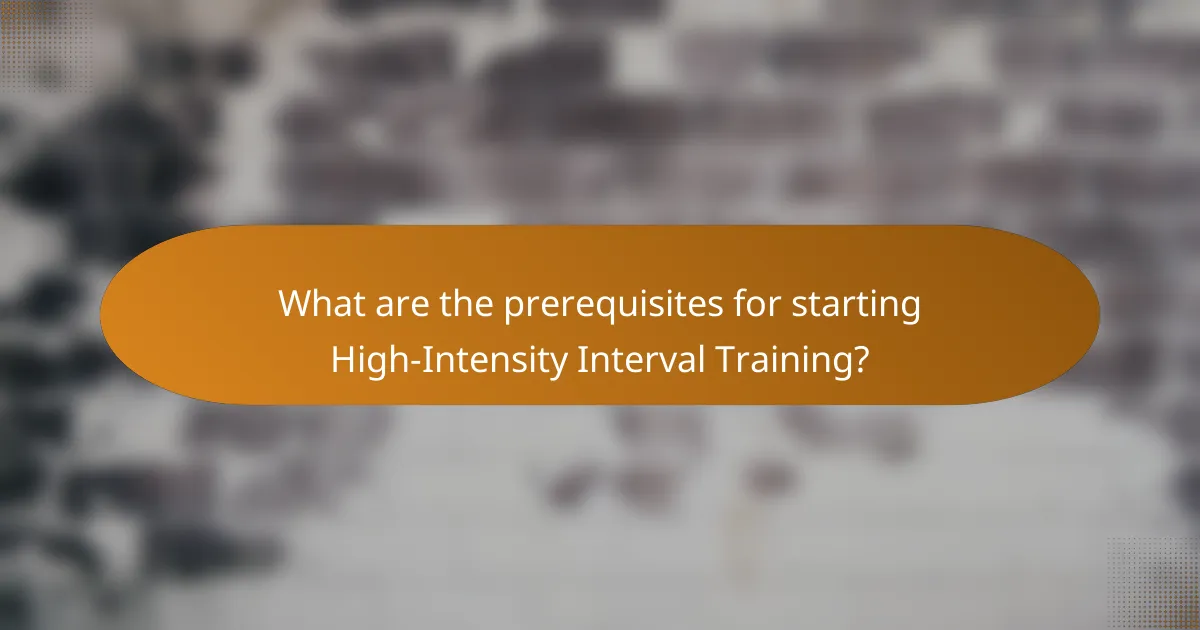
What are the prerequisites for starting High-Intensity Interval Training?
Before starting High-Intensity Interval Training (HIIT), it’s essential to consider your health status, available equipment, and current fitness level. These prerequisites ensure that you can safely engage in this demanding workout style and achieve your fitness goals effectively.
Health assessments
Conducting a health assessment is crucial before beginning HIIT. This may involve a consultation with a healthcare professional, especially if you have pre-existing conditions or have been inactive. A basic physical examination can help identify any potential risks and ensure that your body is ready for high-intensity workouts.
Consider undergoing fitness tests that evaluate cardiovascular health, strength, and flexibility. These assessments can provide a benchmark for your progress and help tailor your HIIT program to your specific needs.
Equipment requirements
HIIT can be performed with minimal equipment, but having the right tools can enhance your workouts. Basic items include a good pair of athletic shoes, a timer or stopwatch, and possibly resistance bands or dumbbells for added intensity. If you prefer a gym setting, access to cardio machines like treadmills or stationary bikes can be beneficial.
Ensure that any equipment you use is in good condition to prevent injuries. If you’re working out at home, create a dedicated space that allows for safe movement and storage of your equipment.
Basic fitness level
A foundational level of fitness is recommended before starting HIIT. If you’re new to exercise, consider building a base with moderate-intensity workouts for several weeks. This preparation helps your body adapt to the demands of high-intensity intervals.
As a guideline, individuals should be comfortable with activities like brisk walking, jogging, or bodyweight exercises before attempting HIIT. Start with shorter intervals and gradually increase intensity and duration as your fitness improves to avoid burnout or injury.
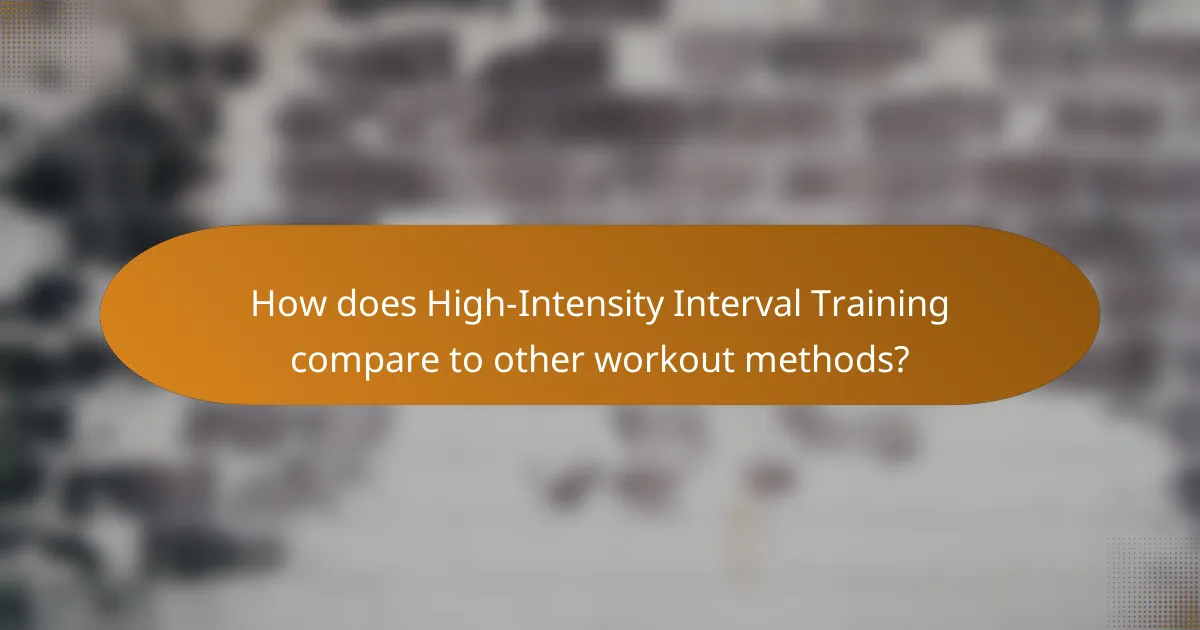
How does High-Intensity Interval Training compare to other workout methods?
High-Intensity Interval Training (HIIT) stands out among workout methods for its ability to deliver significant fitness gains in shorter periods. Unlike traditional steady-state cardio or strength training, HIIT alternates between intense bursts of activity and rest, maximizing calorie burn and improving cardiovascular health efficiently.
Fitness Level
HIIT is suitable for a wide range of fitness levels, from beginners to advanced athletes. Beginners can start with lower intensity intervals and gradually increase their effort as they build endurance. Advanced participants can push their limits with shorter rest periods and higher intensity efforts, making HIIT versatile and adaptable.
It’s essential to listen to your body and modify exercises as needed. For instance, beginners might focus on bodyweight exercises like squats and push-ups, while more experienced individuals can incorporate weights or advanced movements like burpees and sprints.
Time Commitment
One of the key advantages of HIIT is its time efficiency. Most HIIT workouts can be completed in 20 to 30 minutes, making it an appealing option for those with busy schedules. This compact format allows for effective workouts without the need for lengthy gym sessions.
To maximize your time, consider structuring your HIIT sessions with a warm-up, followed by intervals of 20 to 40 seconds of intense effort, followed by equal or longer rest periods. This approach ensures you get the most out of your limited workout time.
Goals
HIIT can help achieve various fitness goals, including weight loss, improved cardiovascular health, and increased muscle tone. The intensity of HIIT workouts promotes greater calorie burn during and after exercise, often referred to as the afterburn effect.
When setting goals, consider your specific objectives. For weight loss, aim for 2 to 3 HIIT sessions per week, combined with a balanced diet. If your goal is to build endurance or strength, incorporate HIIT alongside traditional strength training for a well-rounded fitness regimen.

